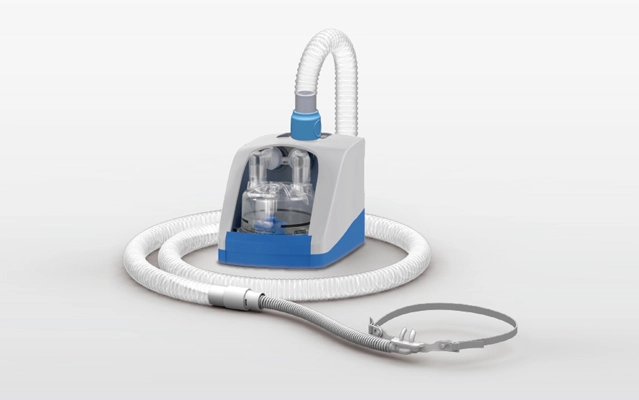With the continuous advancement of medical technology, various portable medical devices are increasingly being used in clinical settings. Among them, the portable end-tidal co2 monitor has been playing a significant role in intensive care, emergency rescue, and daily medical care due to its unique advantages. This article will explore the value and significance of the portable end-tidal co2 monitor in clinical applications from four aspects.
Real-time Monitoring of Respiratory Function to Improve Diagnostic Accuracy
The portable end-tidal co2 monitor can continuously monitor the end-tidal carbon dioxide concentration in a patient's exhalation in real-time, accurately reflecting their respiratory function and lung ventilation status. For patients requiring mechanical ventilation, monitoring the end-tidal carbon dioxide concentration allows doctors to timely understand the ventilation effectiveness and adjust ventilator parameters based on the monitoring results, ensuring adequate oxygen supply and carbon dioxide elimination. Additionally, the portable end-tidal co2 monitor can be used to assess whether a patient has respiratory depression, airway obstruction, or other abnormalities, providing important evidence for clinical diagnosis and treatment.
Assisting in Determining Condition and Guiding Treatment Strategies
The portable end-tidal co2 monitor also has significant applications in assisting with condition assessment. For example, during cardiopulmonary resuscitation (CPR), monitoring the end-tidal carbon dioxide concentration allows doctors to assess the patient's blood flow and airflow, thereby evaluating the effectiveness of CPR. Additionally, the portable end-tidal co2 monitor can be used to diagnose and distinguish between types of cardiac arrests, such as ineffective shocks, pneumothorax, or tension pneumothorax. This diagnostic information is crucial for guiding treatment strategies and developing personalized treatment plans.
Enhancing Nursing Efficiency and Reducing Patient Suffering
The application of portable end-tidal co2 monitor not only improves the accuracy of medical diagnosis, but also greatly enhances nursing efficiency. In intensive care and emergency resuscitation, nursing staff can detect and deal with ventilator-related problems in a timely manner through real-time monitoring of the patient's end-tidal carbon dioxide concentration to ensure the patient's safety. In addition, the portability of the portable end-tidal co2 monitor makes it possible to monitor at the bedside, which reduces the movement and handling of patients and alleviates their pain.
Promoting Medical Technology Innovation and Disciplinary Development
The application of portable end-tidal co2 monitor not only provides patients with safer and more effective medical services, but also promotes the innovation and development of medical technology. With the continuous progress of medical technology, the performance and functions of portable end-tidal co2 monitor are also being improved and optimised. In the future, portable end-tidal co2 monitor will be applied in more fields, providing more comprehensive and accurate information support for clinical diagnosis and treatment.
In conclusion, the value and significance of portable end-tidal co2 monitor in clinical application should not be ignored. It not only improves the accuracy of medical diagnosis and nursing efficiency, but also provides patients with safer and more effective medical services. With the continuous development of medical technology, portable end-tidal co2 monitor will play a more important role in clinical medical treatment.
 English
English










